May 24, 2025 | 16:29 GMT +7
May 24, 2025 | 16:29 GMT +7
Hotline: 0913.378.918
May 24, 2025 | 16:29 GMT +7
Hotline: 0913.378.918
Bac Kan is located in the Northeast region of Vietnam, bordering Cao Bang Province to the north, Lang Son Province to the east, Thai Nguyen Province to the south, and Tuyen Quang Province to the west.
More than 100 kilometers from Bac Kan City, through zigzag roads, Quang Khe commune (Ba Be district) appears with rolling mountains. Far away along the foothills, green, red, and yellow leaves mixed with seedless persimmon trees are in harvest. Walking to Na Chom village, Quang Khe commune (Ba Be district), bustling laughter and chatter echoed throughout the sky. People are harvesting seedless persimmons.
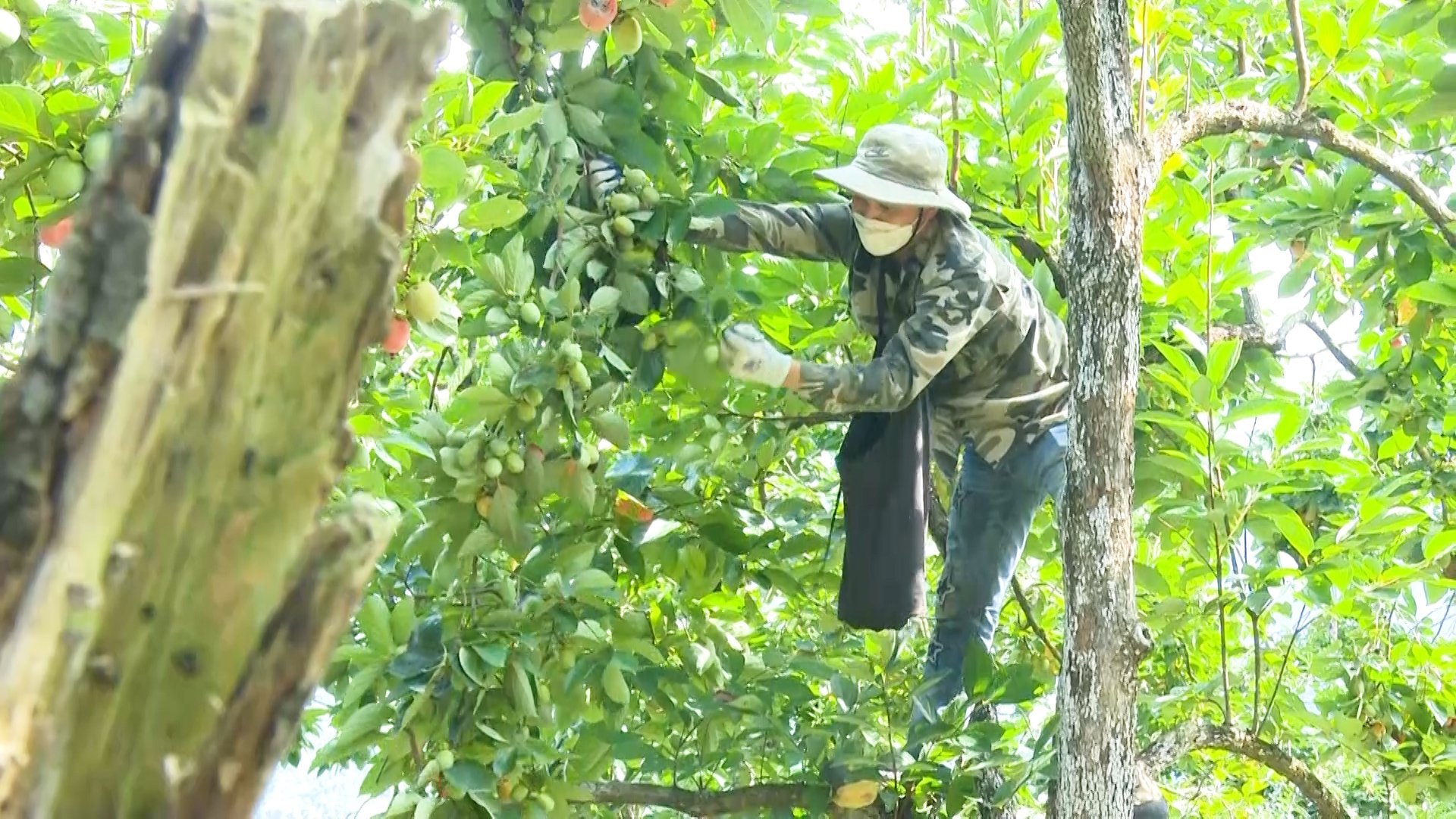
Harvesting seedless persimmons in Quang Khe commune (Ba Be district). Photo: Ha Nhung.
"This year, persimmons are at a good price. Traders bought more than VND 20,000/kg, so people are very excited. Many families have a living thanks to persimmon trees," Mr. Trieu Van Thien (Na Chom village) happily shared.
Vast gardens of seedless roses over 20 years old highlight this land every fall. The seedless persimmon tree has been associated with people for many generations, but it has only been over the past 15 years that this tree has received attention for development.
People participate in training classes, receive scientific and technical guidance, and grow organically, thanks to which the productivity and quality of persimmons are increasingly high. Quang Khe is a commune located at an altitude of more than 700m above sea level, with a fresh, cool climate all year round, so the seedless persimmons here have characteristics that few other places have.
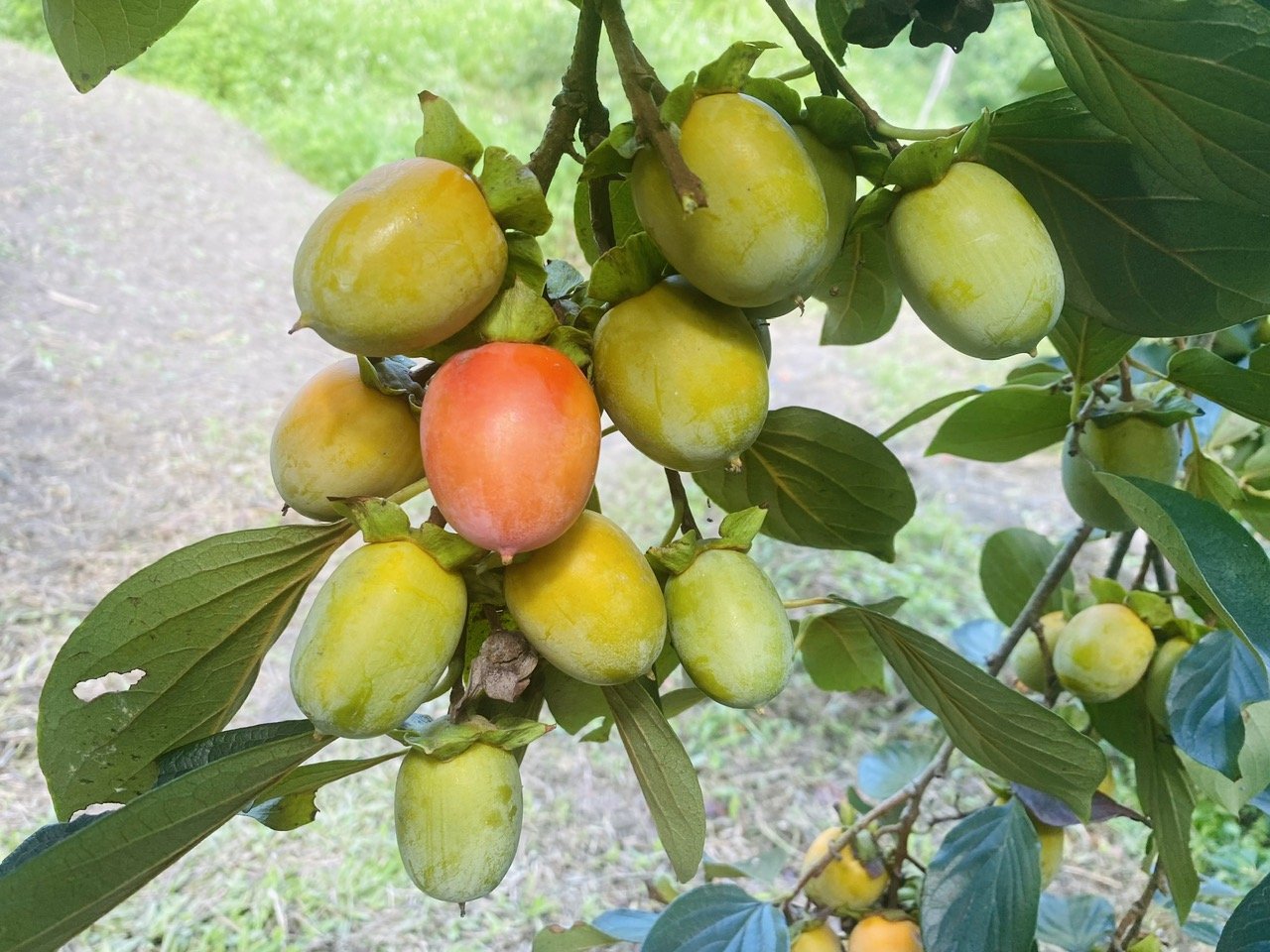
Seedless persimmons in Ba Be district are small but have a delicious flavor. Photo: Ngoc Tu.
Persimmons have a light, sweet taste, are crispy, and have a faint aroma that no other persimmon has. Persimmons usually ripen during the 8th lunar month. Thanks to the connection from planting, care, and harvesting to trade and product promotion, seedless persimmons here gradually affirm their brand, and the area increases yearly.
From a few trees per house, Bac Kan province has over 800 hectares of seedless persimmons, concentrated in Ba Be, Ngan Son, and Cho Don districts. Ba Be district alone has nearly 300 hectares of harvested seedless persimmons. In 2010, seedless persimmons were granted a geographical indication certificate by the Intellectual Property Office of Vietnam (Ministry of Science and Technology). In 2013, this product reached the top 100 famous brands and brands.
With poetic scenery near Ba Be Lake tourist area, the seedless persimmon growing area in Quang Khe gradually becomes a destination for many tourists.
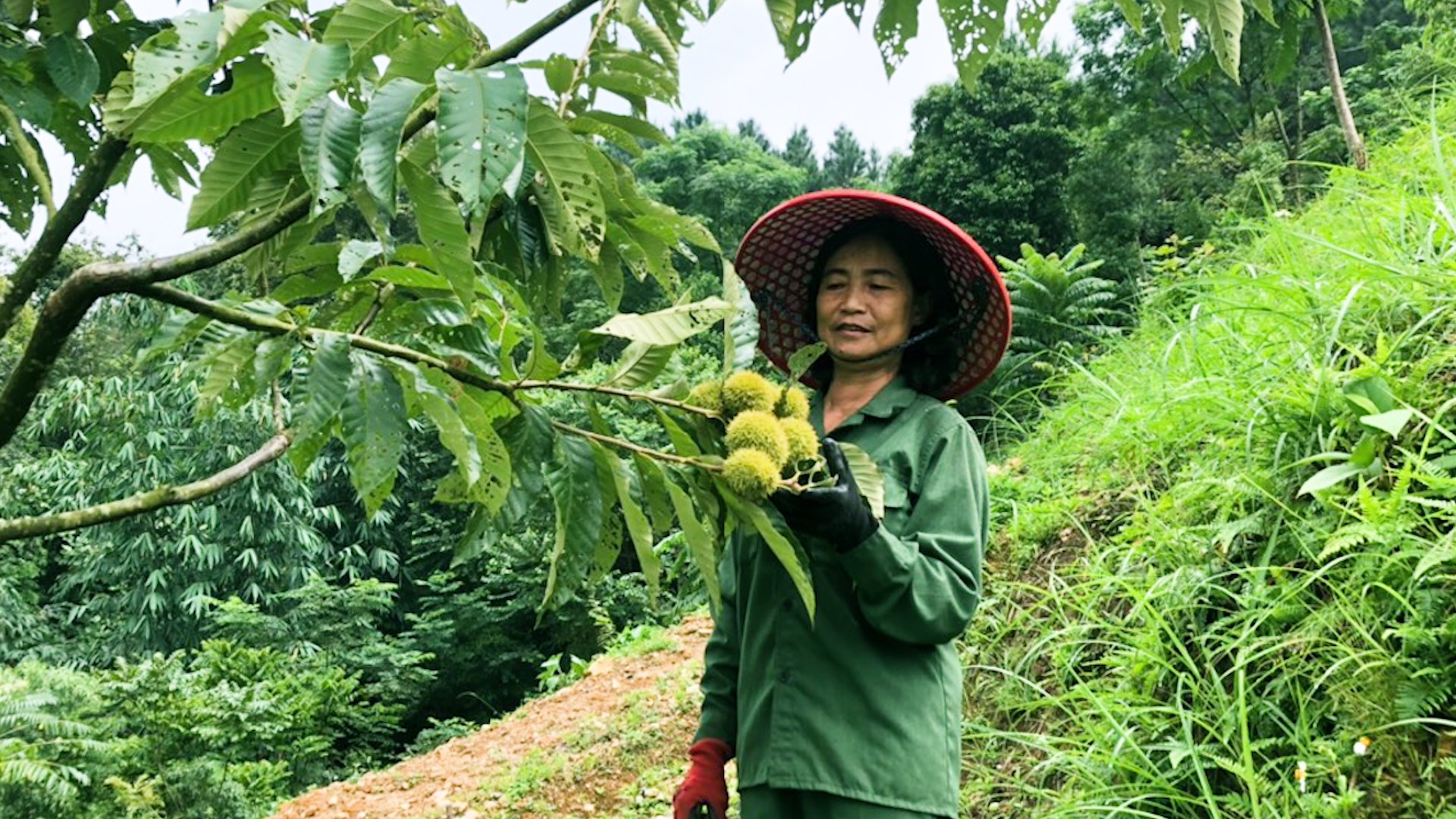
Chestnut harvesting season in Duc Van commune (Ngan Son district). Photo: Ngoc Tu.
Coming to Bac Kan in the fall, visitors can follow Highway 3 to Ngan Son district to experience chestnut harvesting with people. Ngan Son chestnuts begin to be harvested from the 7th lunar month. The chestnuts here are blue, have many thorns, turn yellow when ripe, and fall to the ground.
The chestnut tree is not a native variety and has only been brought here to be planted for more than 20 years. Thanks to being grown on high mountains and with a cool climate all year round, chestnuts have gradually become endemic to Ngan Son. From being planted sporadically, there are now more than 100 hectares.
Ngan Son land, with mountains as high as the eye can see, is the ideal condition for chestnut trees to grow, thanks to which the chestnuts here are large, eye-catching, and have a characteristic fragrant taste.
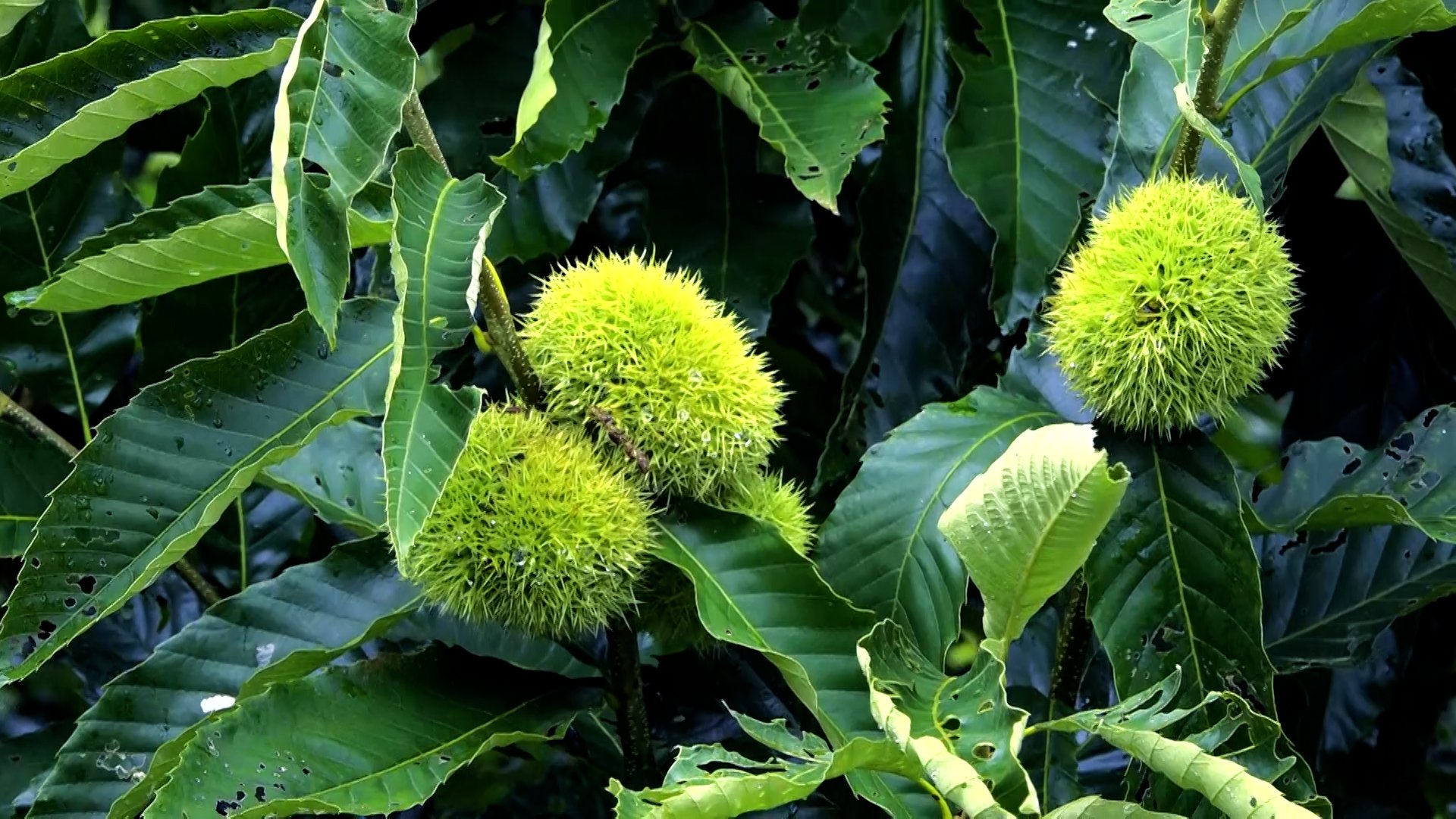
The chestnut tree has become a crop that brings high economic value to the people of Ngan Son district. Photo: Ngoc Tu.
In addition to the majestic natural scenery, coming to the chestnut growing area in Ngan Son, visitors will see a unique way of harvesting chestnuts. With sharp thorns all around, getting chestnuts is not easy for first-timers coming here. When the chestnuts fall, people use wooden or iron picks and gloves to pick them up. Then the chestnuts are separated with tongs, selected, and classified by size.
Mr. Nong Van Cuong (Duc Van commune, Ngan Son district) shared that in other areas, on average, a kilo of chestnuts has 60 to 65 seeds, in Ngan Son, the chestnuts are large, so there are only about 40 seeds. Currently, people often clean the grass under the chestnut trees to facilitate care and harvesting, creating green hills that attract young people to travel, experience, and explore.
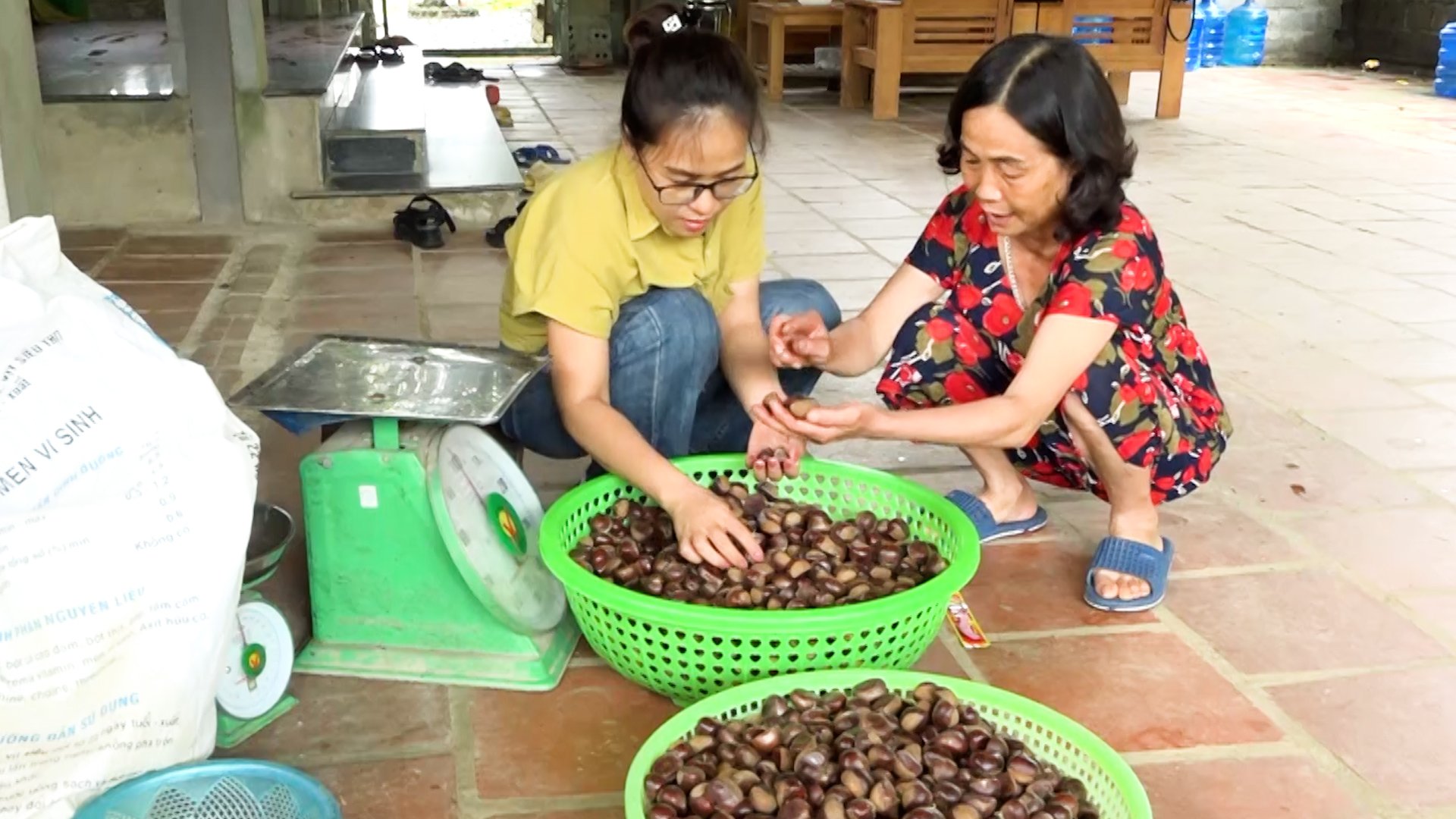
The selling price of chestnuts grown in Ngan Son district is always higher than other regions. Photo: Ngoc Tu.
Ngan Son district chestnuts have been recognized as a 3-star OCOP, a Vietnamese organic product, with a harvest area of nearly 30 hectares and an average yield of 56 tons/ha. The selling price of chestnuts in the garden ranges from VND 80 to VND 100,000/kg.
Bac Kan's natural land area is 485,996 hectares, of which: Agricultural land is 44,116 hectares, accounting for 9.08%; Forestry land is 413,366 hectares, accounting for 85.05%; Other land (special-use land, residential land, and unused land...) is 28,514 hectares, accounting for 5.87%. The land is relatively fertile; in many places the soil layer is thick, mountainous soil has a high amount of humus, suitable for agricultural and forestry production, growing industrial crops, fruit trees...
Translated by Tuan Huy
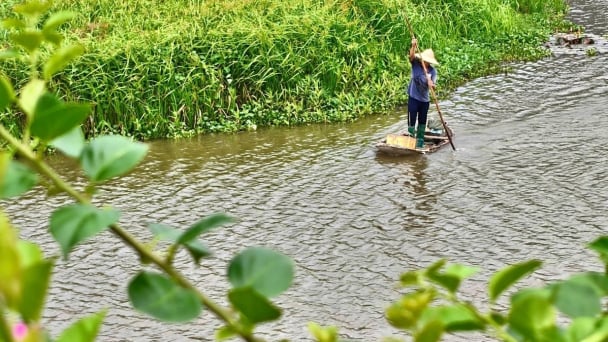
(VAN) In the tranquil wetlands of Van Long, there are quiet souls who guard the forests, nurture the waters, and oversee every bird and troop of langurs as protecting the essence of a living heritage.
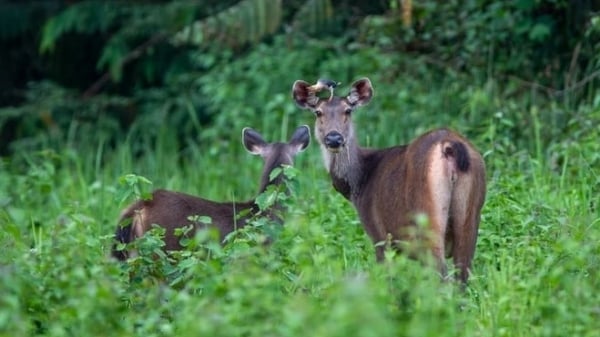
(VAN) WWF, GIZ, IUCN, UNDP call for biodiversity conservation and sustainable development must be regarded as a unity in strategies for a green future.
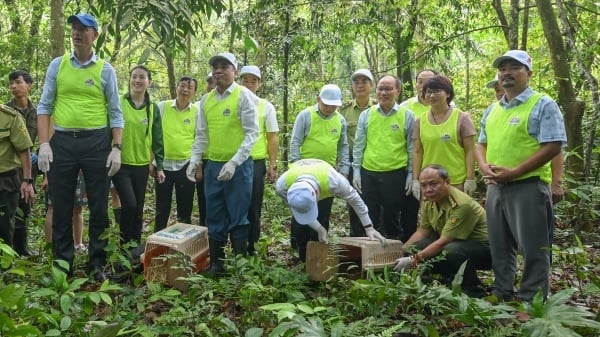
(VAN) On celebration of International Day for Biological Diversity, Deputy Minister Nguyen Quoc Tri called for practical actions to address nature and biodiversity conservation.
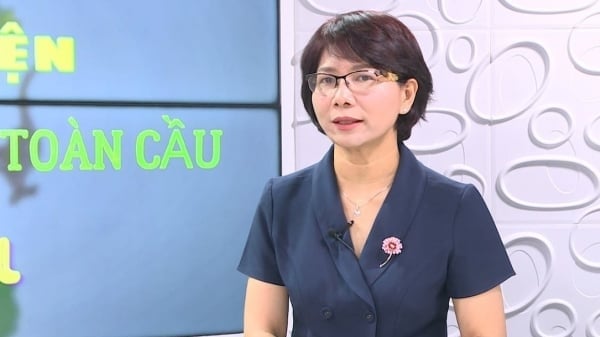
(VAN) Dr. Hoang Thi Thanh Nhan – Deputy Director of the Nature and Biodiversity Conservation Agency – highlighted this on the International Day for Biological Diversity, May 22, 2025.
![Ho Chi Minh city adapts to climate change: [2] Accelerating action](https://t.ex-cdn.com/nongnghiepmoitruong.vn/608w/files/chiqk/2025/05/22/4024-4220-bien-doi-khi-hau-1-100626_766.jpg)
(VAN) Clearly recognizing the challenges posed by climate change, Ho Chi Minh city has swiftly shaped its policies and implemented practical solutions to adapt.
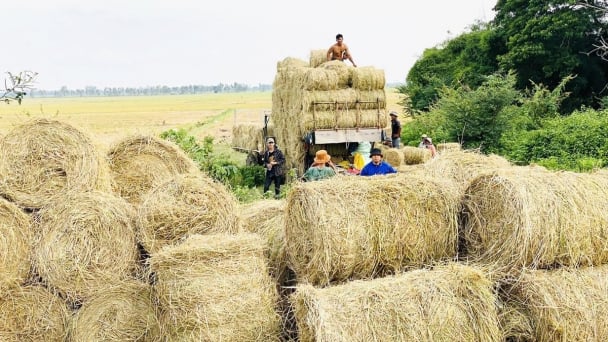
(VAN) Rice straw is no longer just a discarded byproduct, but it is becoming a green resource that helps farmers in the Mekong Delta reduce emissions and promote circular, sustainable agriculture.
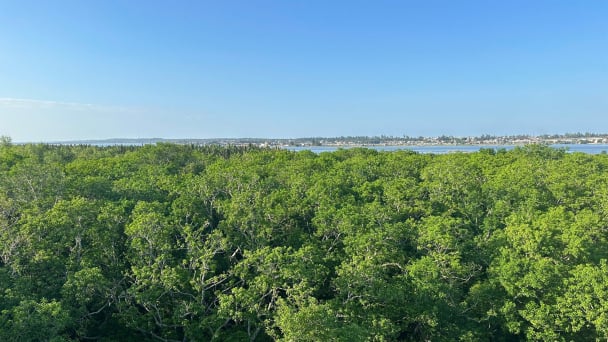
(VAN) Other Effective Area-based Conservation Measures (OECMs) are solutions that contribute effectively to achieving the goals of the Kunming–Montreal Global Biodiversity Framework.